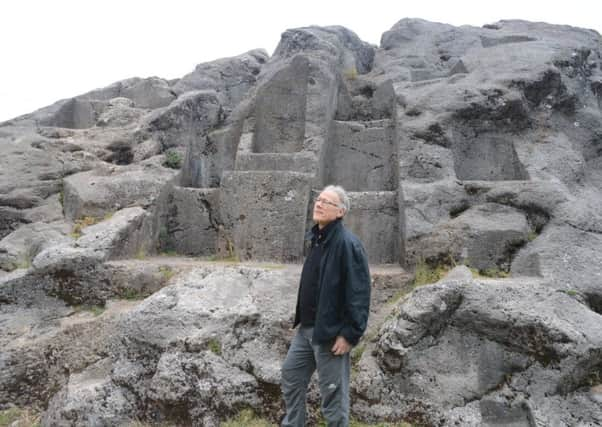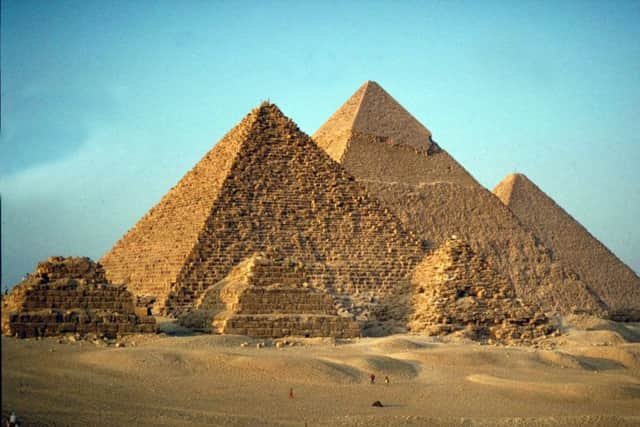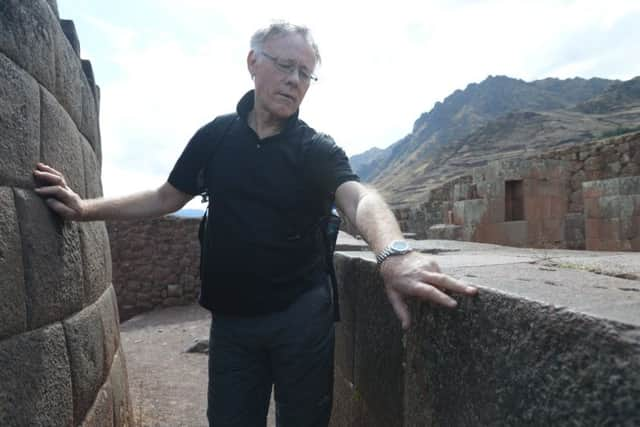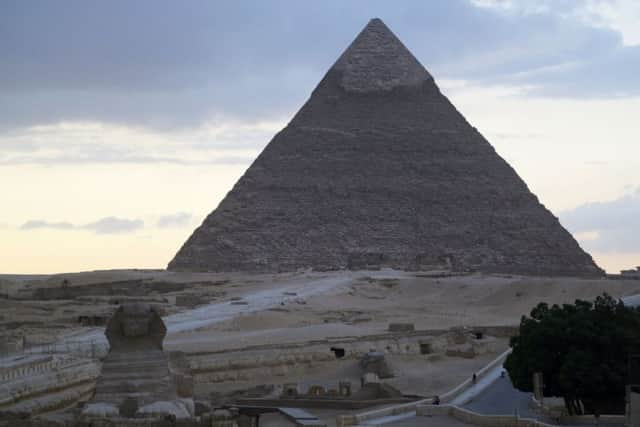Fresh clues in the hunt for a lost civilization - Graham Hancock interview


“There is a growing feeling that we cannot trust authority figures any more. I think people are no longer prepared to accept information on the basis of authority but really want to think for themselves. People who are fed up with the way that the establishment kicks alternative ideas in the teeth.”
In this most fractious of times, you could be forgiven for thinking that author Graham Hancock was talking about the state of modern politics.
Advertisement
Hide AdAdvertisement
Hide AdHowever, he is actually referring to archeologists and scientists, specifically their attitude towards the perception of how old humanity is and for how long it has existed in the form of advanced civilizations.
It is a subject matter that Mr Hancock has devoted a large part of his life to. Through a series of books, beginning with 1995’s bestseller Fingerprints of the Gods, he has mapped out incredible and controversial theory, one that posits that humans are “a species with amnesia” and that in the mists of pre-history there was an advanced civilization which was virtually wiped out by a global cataclysm, with only mysterious monuments and myths left behind to mark their existence.
His research is based on subject matters as diverse as archeology, mythology and astronomy and has allowed him to sell more than nine millions books. However his work has also seen him receive a huge amount of flack from sections of the mainstream academic community who heavily criticised his views, saying that such a sophisticated buildings such as those seen in Ancient Egypt, could not have been produced that long ago when humans are said to have been nothing more than simple hunter gatherers.
However, over the years, a number of scientific and archeological discoveries have been made which suggest his ideas of an ancient advanced civilization may not quite have been so left field.
Advertisement
Hide AdAdvertisement
Hide AdIn the 1990s a site in Turkey, known as Göbekli Tepe, was unearthed. It consisted of giant and intricate monolithic pillars, weighing up to 10 tonnes each, and decorated with sophisticated carvings. It is the largest megalithic site in the world and has been carbon dated to be as old as 11,000 years old.


This has been followed by the discovery of nuclear glass in Northern America, dated to roughly the same time as the so called Younger Dryas epoch (effectively the last ice age), has pointed far more strongly to the idea of a cataclysmic comet impact which would have been capable of destroying much life on earth. The glass is dated again to a similar period in the earth’s history.
“The breakthroughs are happening on an almost daily basis,” says Hancock, speaking to The Yorkshire Post ahead of a visit to Leeds next week.
“I actually thought I was done with it. I felt I had made my contribution to the investigation of the lost civilization mystery. I didn’t think I would go back until Göbekli Tepe emerged, I began to realise that we are dealing with an 11,600 year old site and suddenly pieces of the puzzle that did not fit together suddenly fell into place.
Advertisement
Hide AdAdvertisement
Hide Ad“One of the great mysteries of the Great Sphinx of Giza and the argument it is 12,000 years old was that the archaeological argument that no way it can be 12,000 years old because there was no culture in the world at that time that was capable of making such monuments.


“And suddenly we get Göbekli Tepe, firmly dated to 11,600 years old, suddenly that argument falls to pieces.”
Next month sees the release of America Before: The Key to Earth’s Lost Civilization, Hancock’s latest work on the subject. Focusing on both North and South America, he begins to attempt to join the dots of both scientific and sociological similarities with ancient cultures around the world.
Among its more than 500 pages he reports on the startling discovery by scientists of Australasian DNA in the members of modern day members of tribes in the Amazon jungle, DNA which has also been detected in skeletal remains found in the jungle which date back 11,000 years.
Advertisement
Hide AdAdvertisement
Hide Ad“I think it is a sign of the way that advances in science are gradually chipping away at the monolithic block of archeology. And this is particularly true with genetics and DNA studies, because archeologists can speculate all they like but the DNA is just absolutely hard solid evidence. We have this extraordinary mystery of Australasian DNA in the heart of the Amazon jungle.


“If it had got there in the way that archeologists think the peopling of the Americas was done, in other words out of Siberia across the Bering Straits which was then a land bridge owing to lowered sea levels, down through North America, through Central America and then into South America then there would absolutely be DNA fingerprints in North and Central America, but there are none.
“It is very ancient, it leaves no track in North or Central America and the only logical explanation is that it arrived there as the result of an oceanic crossing. And that in itself completely rewrites history because nobody 11,000 years ago is supposed to have been able to navigate and cross the Pacific Ocean with a reproductively viable population that could leave a trace in the DNA record.”
Elsewhere in America Before, Hancock looks at the similarity between cultures in the Deep South of the United States, specifically around Moundville in Alabama, finding striking parallels between the symbolism and religious themes as those seen in the world of Ancient Egypt, despite more than a millennium having elapsed between the apex of the two cultures.
Advertisement
Hide AdAdvertisement
Hide Ad“Is a massive mystery because Ancient Egypt had been gone from the world before Moundville was ever built, so there is no way that the Egyptians could have sailed across the seas and influenced directly the Moundville culture. And yet the similarities are so striking and so detailed and in depth that it is impossible to ascribe it to coincidence. Looking at the big picture the only reasonable explanation that we can come to is that we are looking at a legacy of ideas that was passed down from a remote common source to many different cultures around the world.”
Hancock believes strongly that further discoveries will continue to challenge the conventional paradigm when it comes to the age of humanity. He cites the more than 60 scientists from various academic institutions worldwide that are currently researching comet impact hypothesis. The site of what could potentially be a giant impact crater under the ice sheets in Greenland is currently being excavated.
However he has personal reasons for wishing to see this work continue. Hancock suffered a series of seizures in 2017 whilst researching America Before in the United States. He was placed into an induced coma and his wife was told that in all likelihood he would die or suffer severe brain damage. He recovered and was able to finish his book but, as he approaches the age of 69, he is looking for others to pick up the cudgels.
“I tell you frankly that researching and writing this book has nearly killed me,” he says. “It has made me think again. I know I cannot keep pushing it the way of pushing it all my working life. But I am seeing signs that younger people will pick up this baton and run further with it, because there is a lot more running to be done.”
Graham Hancock is at Waterstones, Leeds, April 2 at 7pm.